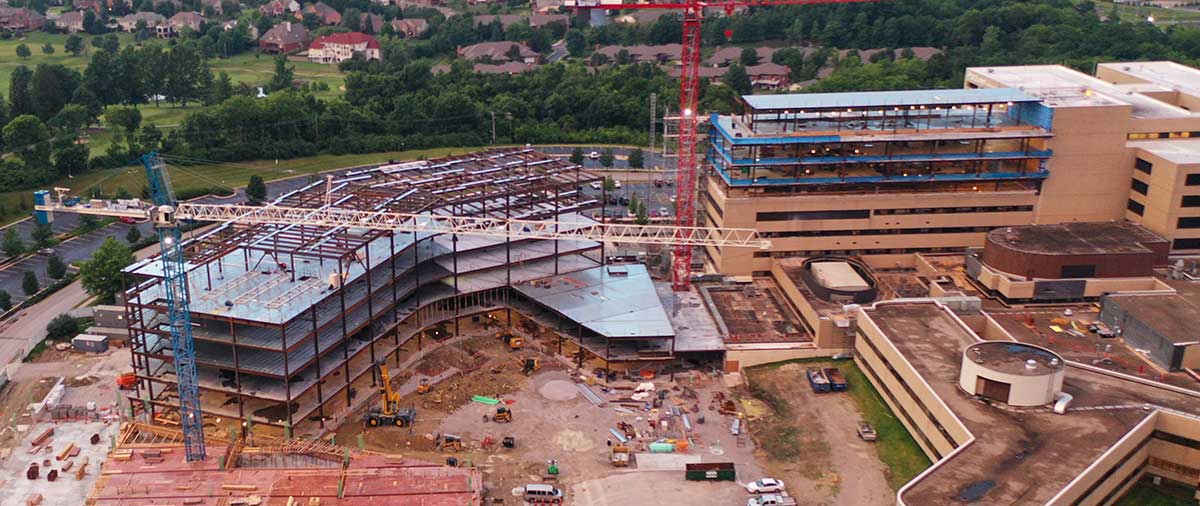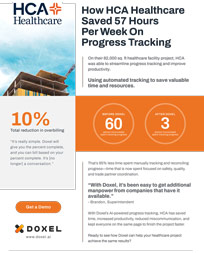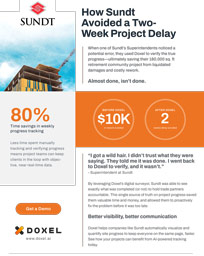Transparency, Risk Management, and Benchmarking: The Three Pillars to a Successful Healthcare Projects
Healthcare projects are not typical commercial construction. Aside from the complexity and cost, healthcare carries a higher level of risk and liability with patient care depending on the outcome of the project. With more at stake, accuracy and predictable outcomes are paramount to the success of the project.
At the foundation, there are three pillars to success for any healthcare project: transparency, risk management, and benchmarking.
Let’s take a look at each of these pillars—and at how automated progress tracking can help companies meet these requirements to help teams complete projects on time and under budget.
Build Transparency and Communication Into Every Process
Transparency between owners, general contractors, and subcontractors is critical in hospital construction because it ensures every step of the way that the project is following the schedule, budget, and required quality standards.
Clear communication and the sharing of real-time information makes it easier to identify and resolve any issues that may arise during the construction process, which can prevent delays and cost overruns.
Additionally, proper transparency makes sure all parties are working towards the same goals and that everyone is aware of the project's progress and any necessary changes. In the case of hospital construction, it’s important that transparency is maintained to ensure the safety and well-being of the patients, staff, and visitors—both during construction and after it’s completed.
How can construction companies improve transparency among all stakeholders? Here are five processes that can help.
- Use autoated progress tracking software: Utilize progress tracking software that has real-time updates and progress tracking capabilities. This will enable both the owner and GC to access the same information from the same place, so everyone can stay on top of the project status. Also, make sure the solution is tracking all visible trades so that your data has the granularity needed to effectively manage the project
- Share progress reports: Send regular progress reports to all stakeholders, including the owner, the GC, and other members of the project team. Reports should be easy to read and understand, and should clearly show the progress of each task, any issues that came up, and any changes that were made.
- Communicate effectively: Establish standardized digital communication channels, such as email or instant messaging, to share updates and progress reports. This will eliminate the risk of a message getting lost while ensuring that everyone is on the same page so problems can be identified and addressed quickly.
- Use visual tools: A picture or graph speaks louder than words. Leverage visual tools such as Gantt charts, timelines, and progress bars to provide a clear and easy-to-understand view of the project status. This helps teams reduce misunderstandings and increase transparency.
- Schedule regular meetings: Implement a consistent cadence of meetings between the owner, the general contractor and other stakeholders to review progress, discuss issues, and plan for next steps.
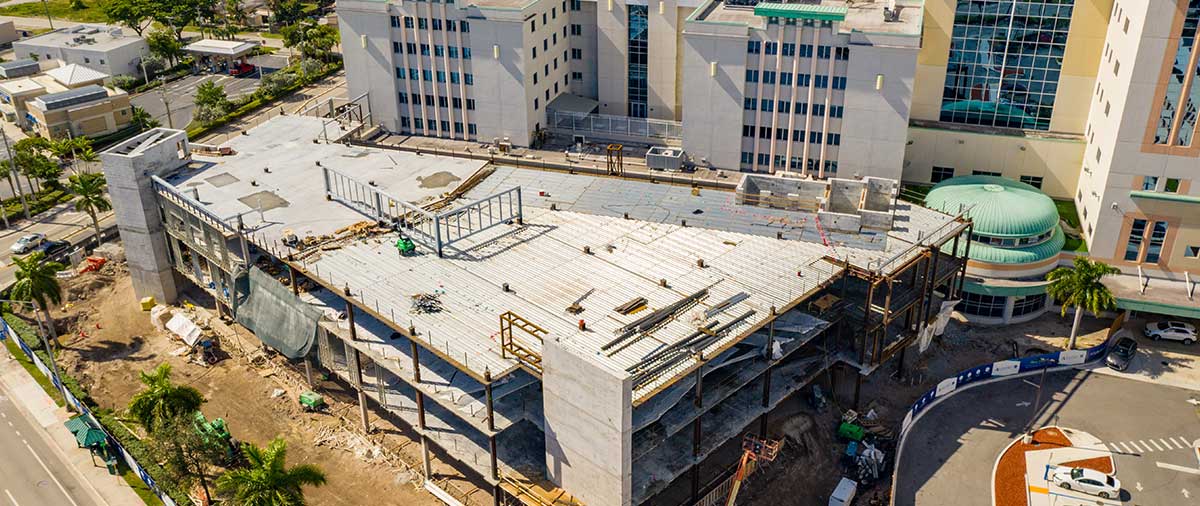
Mitigate Risks For Better Outcomes
Due to the costs and complexity of healthcare projects, it is crucial to mitigate risk to ensure safety, quality, and compliance. Risk is inevitable in construction, but there are steps you can take to reduce and ensure better outcomes for your projects.
- Develop a comprehensive project plan: This should include detailed project scope, schedule, budget, and risk management plan. Doing this helps make sure that all parties are aware of the project's goals and objectives, and have a clear understanding of where the project's progress should be at all times.
- Communicate consistently: Identifying and resolving any issues that may arise starts with effective communication. The faster all parties are alerted to potential risk, the quicker everyone can spring into action to mitigate or eliminate it from becoming a bigger problem later down the road.
- Use automated progress tracking: AI-powered progress tracking can provide real-time information and analytics on the project's progress, and helps identify areas of risk without relying on the manual efforts of the project team.
- Conduct a thorough risk assessment: Identify potential risks and proactively develop mitigation strategies to reduce the likelihood of those risks occurring.
- Establish a quality control program: Implementing a comprehensive quality control program ensures that all work is performed to the required standards, and leveraging technology to check for quality means any problems are found faster.
- Make it easy to access Building Information Modeling (BIM) tools: Utilizing BIM can improve communication and collaboration, and provide a visual understanding to better maintain quality and standards.
- Continual monitoring and review: What you don’t know could come back to haunt you. By continually monitoring and reviewing project progress at every phase, it’s easier to make adjustments as needed for the project to stay on track and within budget.
- Implement an effective change management process: Establishing a collaborative change management process means that any changes to the project are properly documented, reviewed, and communicated, so everyone can adapt quickly as needed.
By following these steps, healthcare construction projects can manage risk and improve outcomes.
Even better, there’s technology that alleviates the manual component to many (if not all) of the steps needed to mitigate risk.
By pairing 360-degree video capture with AI-powered progress tracking, teams are able to objectively measure progress of work in place with every data capture, every week. This provides healthcare construction projects with real-time information on the progress and quality of what’s been completed.
Automated progress tracking is the best way to bridge everything together to keep project teams on the same page and catch potential issues faster with enough time to fix them—ultimately preventing delays and unnecessary overruns. This greater degree of transparency and accountability helps to ensure that all parties are meeting their obligations and building to the required standard of the project.
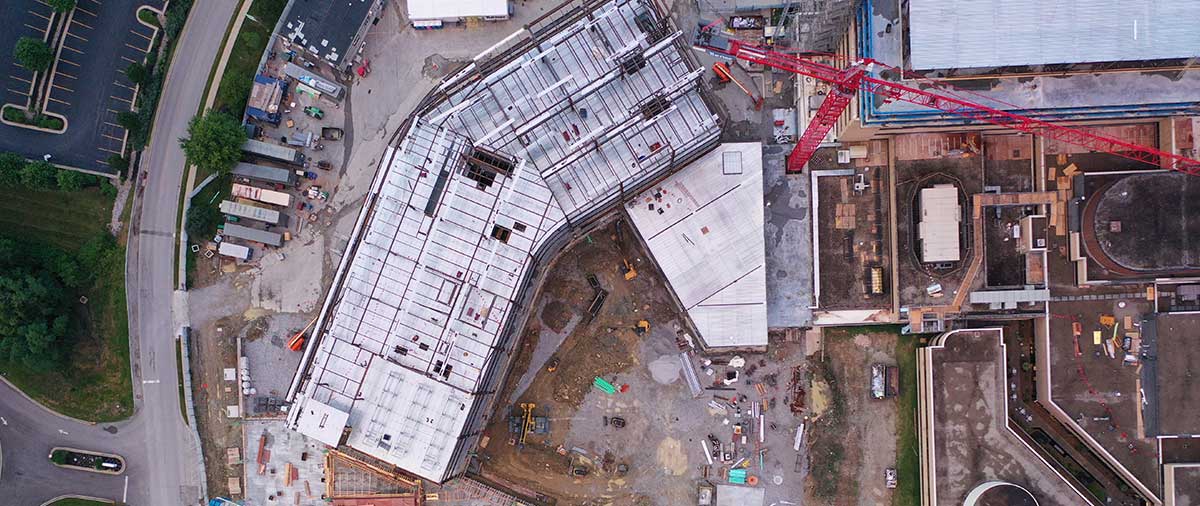
Benchmark For More Predictable Outcomes
Benchmarking in healthcare construction provides a way to measure and compare the performance of different projects. Leveraging benchmarks helps to identify best practices and areas for improvement, which can be used to set goals and targets for future projects. Benchmarking can also reveal trends and patterns across projects to identify any potential risks and opportunities earlier on.
Healthcare construction benchmarking can inform decision making and contribute to the success or failure of a project. For benchmarking to be most impactful, project progress should be collected in a standardized and repeatable way. Implementing an automated way to analyze project progress in real time helps save time and ensure meaningful insights—ultimately leading to more predictable outcomes, as well as improved quality, cost, and schedule performance.
Leverage AI-Powered Progress Tracking For Project Success
Automated progress tracking works to streamline the three pillars for project success by providing objective information and greater visibility into the project's progress. Between project teams and stakeholders, everyone is able to be more closely involved to make more informed decisions faster.
With all parties working towards the same goals, everyone is aware of the objective progress metrics as well as any changes needed. With the right solution in place, teams can increase efficiency, decrease risk, and save valuable time and resources.
Not sure where to get started? Click here to learn more about Doxel’s digital surveyor and analytic tools for healthcare construction today.


